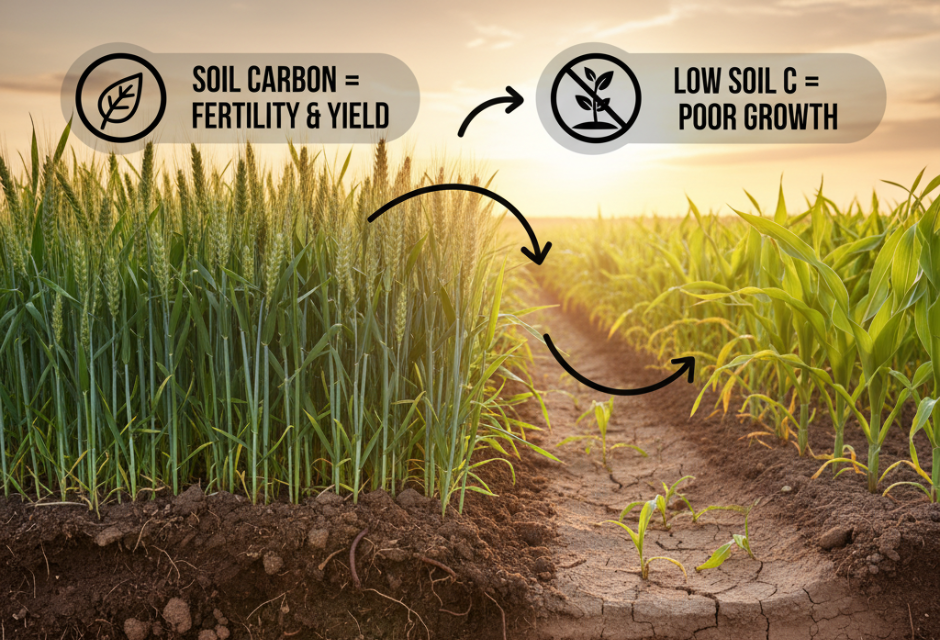What is Regenerative Agriculture?
- IRIS Hybrid Seeds

- May 28
- 3 min read
Updated: May 29
Regenerative agriculture is a natural way of farming that focuses on keeping the soil healthy, growing a variety of crops, and taking care of the land for the long term. It works with nature, not against it
Key Principles (What to Do)
• Protect the Soil: Avoid heavy plowing (less tillage), grow cover crops, and keep organic matter in the soil
• Grow Different Crops: Use crop rotation, add livestock to the farm, and protect natural areas like trees and rivers.
• Use Water Wisely: Keep moisture in the soil with mulching, plant cover, and use efficient irrigation methods.

Benefits for Your Farm
• Better Soil: Healthier soil means better yields, fewer inputs, and stronger crops.
• More Life on Your Farm: Birds, insects, and animals help balance pests and keep the farm healthy.
• Fight Climate Change: Healthy soil can store more carbon from the air.
• Cleaner Water: Less chemical use means cleaner water in your wells and rivers.
• Stronger Against Weather: Farms become more resistant to droughts, floods, and changing weather.

Common Practices
• No-Till or Less Tillage: Avoid turning the soil too much so it stays rich and alive.
• Cover Crops: Grow plants like legumes or grasses when your main crops are not in the field.
• Rotate Crops: Change what you plant in each field every season to keep the soil healthy.
• Natural Pest Control: Use traps, friendly insects, and fewer chemicals.
• Add Livestock: Animals like cows or chickens can help fertilize the land naturally.

Challenges and Opportunities
• Starting Can Be Hard: It may take time, learning, and investment to change how you farm.
• Growing Market: More people want food that’s grown sustainably – this can mean better prices.
• Support Available: Some governments and organizations offer help, training, or funding for farmers going regenerative.

Why It Matters
Regenerative farming helps you grow healthy food, take care of the land, and leave a better farm for the next generation — all while helping the planet.

Conclusion
Regenerative agriculture transcends conventional farming; it embodies a commitment to collaborating with nature to foster healthier soils, robust crops, and a more resilient future. By employing straightforward, nature-based practices, farmers can enhance productivity while simultaneously safeguarding the environment. Although the transition to regenerative practices may require time and effort, the long-term advantages for your land, financial stability, and the planet are significant. Ultimately, regenerative farming not only benefits the present but also represents a prudent investment for the future.
Frequently Asked Questions (FAQ)
Q: Is regenerative agriculture only for organic farms?
A: No. Any farm—conventional or organic—can adopt regenerative practices. It’s about improving soil health and sustainability, not fitting into one label.
Q: How long does it take to see results?
A: Some benefits, like increased soil life and better water retention, can appear within the first season. Others, like improved yields and reduced input costs, may take a few years.
Q: Do I need special equipment?
A: Not necessarily. Many practices, like cover cropping and crop rotation, can be done with tools you already have. No-till drills or compost spreaders might be helpful but aren’t required to get started.
Q: Will my yields go down?
A: There may be a short-term dip during the transition, but over time, healthier soil can lead to stronger and more resilient crops with fewer inputs.
Q: Where can I get help to start?
A: Look for local farming groups, agricultural extension offices, or nonprofit organizations that support regenerative practices. Some offer training, advice, or even financial support.








Comments